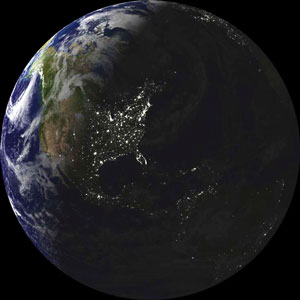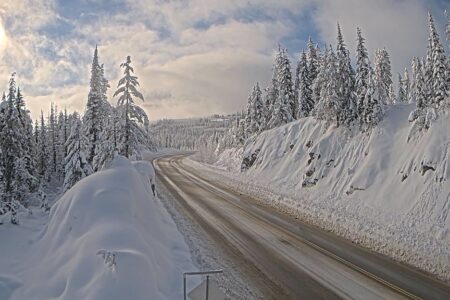How it played out: Earth Hour 2011’s numbers locally, provincially, and nationally
According to the World Wildlife Fund (WWF), the organization behind international phenomenon Earth Hour, a billion people on this planet turned out their lights to celebrate the event’s third year and show support for action against global climate change. Locally, the hour in the dark also seems to have been a success, though the most recent Challenge did not result in our very own museum winning a $5000 energy upgrade from Fortis. “We want to thank the community for their support and for putting in a great effort,” says Libby Martin, the president of the Rossland Museum.
In the Fortis service area, it was Keremeos that took the top spot with Earth Hour pledges with over 7% of that community’s population signing up, winning them an energy upgrade that will go their Legion. Rossland came a very respectable third, however, with just over 6% of the population pledging–a mere smidgen behind second-place joint communities Kaslo and Crawford Bay. The bottom three communities were Creston, Kelowna, and Grand Forks, each with fewer than 1% of the population pledging. For a full list of results, click here. Fortis reported that overall there was an 80% increase in the number of pledges it its service area. But pledges are not the only measure of success when it comes to Earth Hour, and they don’t fully reflect the number of people who participated in the hour. Quantitatively, energy savings are the most telling detail. Fortis reported that it its service area electricity consumption during Saturday night’s event dropped by 1%, which works out to 3.58 megawatts. This is equivalent, according to the power company, of turning out about 60,000 incandescent light bulbs. Provincially, British Columbia saved about 117 megawatt hours during Earth Hour and reduced its energy output by 1.8%, which is double the 2010 number. Accordinng to BC Hydro, this year’s reduction equals turning 7.8 million 15-watt compact fluorescent light bulbs. The communities with the highest reductions were Pitt Meadows with 6% and Tumbler Ridge with 5%. Vancouver’s percentage was 1.5 and our capital’s percentage was .93. Nationally, the numbers are all over the place. Toronto Hydro reported a 115 megawatt drop in power usage, which, according to their site, is enough energy to power 12 skyscrapers or 35,000 homes. New Brunswick Power says that energy consumption in the province dropped by 24 megawatts, or 480,000 lights, and Nova Scotia Power reported a reduction of 18 megawatts, or 1.4 million 13-watt compact fluorescent bulbs. Stats for Alberta were difficult to come by, and an article in the Vancouver Sun gave a clue as to why that might have been: Edmonton saw a spike of 1.01% in power usage during Earth Hour, though Epcor, the company who provides that cities power, claims the weather was the culprit. Calgary’s power provider, Enmax, reported no significant drop in energy use during the hour. It is interesting to note that the web sites for these two corporations do not contain any stats for Earth Hour, perhaps indicating some sheepishness on their parts. So in the end, was it all worth it? A 1% drop in energy use in our area seems quite pathetic given the amount of promotion Earth Hour received. How much energy did it cost to print out posters and produce promotional material for this event? The same question can be asked of any of the other areas mentioned in this story. An hour in the dark once a year might seem all well and good, but in the grand scheme of things the simple gesture of switching off lights and non-essential electronics for that period of time appears to have not made much of a difference. Those of us who participated on March 26 might have had the best of intentions, but it’s clear that it was just that: a well-intended but fairly futile gesture.
























